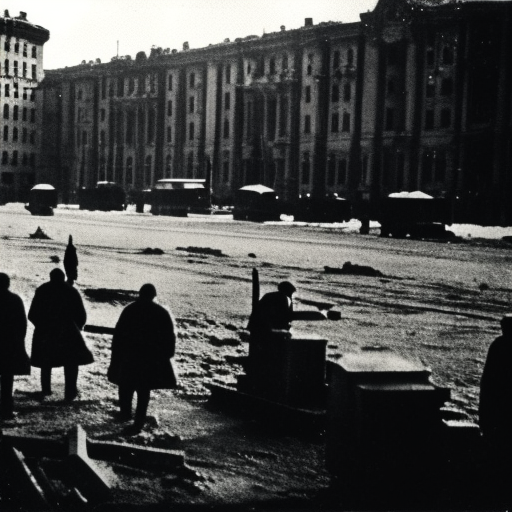Siege of Leningrad: A Brutal and Prolonged Battle
The Siege of Leningrad, which lasted from September 1941 to January 1944, was one of the most brutal and prolonged battles of World War II. It was a German military operation aimed at capturing the city of Leningrad (now known as Saint Petersburg) in the Soviet Union. The siege resulted in immense suffering and loss of life for the residents of Leningrad, but ultimately ended in Soviet victory.
The German Offensive and the Encirclement of Leningrad
In June 1941, Nazi Germany launched a massive invasion of the Soviet Union, known as Operation Barbarossa. As part of this offensive, German forces advanced towards Leningrad, seeking to capture the city and cut off Soviet supply lines. By early September, the German army had surrounded Leningrad, effectively cutting off all land routes into the city.
The Blockade and the Struggle for Survival
Once the city was encircled, the Germans began a blockade, cutting off all supplies, including food and fuel, to Leningrad. The blockade created a dire situation for the city’s residents, who faced extreme hunger, cold, and disease. The lack of food led to widespread starvation, with people resorting to eating pets, rats, and even leather to survive. The harsh winter conditions exacerbated the suffering, as the city’s infrastructure and heating systems were severely damaged.
The Road of Life and the Ladoga Lake Supply Route
Despite the blockade, the Soviet government made efforts to supply the city. The Road of Life, a makeshift ice road across Lake Ladoga, became a vital supply route. Trucks would transport supplies across the frozen lake, providing a lifeline for the besieged population. However, the road was constantly under threat from German artillery and air attacks, making the journey perilous.
The Battle for Leningrad and the Soviet Counteroffensive
While the city was under siege, Soviet forces launched a series of counteroffensives to break the blockade. In January 1943, the Red Army launched Operation Iskra, aimed at opening a land corridor to Leningrad. The operation was successful, and a narrow corridor was established, allowing limited supplies to reach the city. However, it was not until January 1944, after a long and bloody struggle, that the siege was finally lifted.
The Human Cost and Legacy of the Siege
The Siege of Leningrad had a devastating impact on the city and its residents. It is estimated that over one million people died during the siege, mostly due to starvation and disease. The siege also caused significant damage to the city’s infrastructure, with many buildings destroyed or severely damaged.
The resilience and determination of the people of Leningrad during the siege became a symbol of Soviet resistance against the German invaders. The siege also highlighted the brutality of war and the immense human suffering it can cause. Today, the Siege of Leningrad is remembered as one of the most tragic and heroic episodes of World War II.
In conclusion, the Siege of Leningrad was a brutal and prolonged battle during World War II. The German blockade cut off all supplies to the city, leading to extreme hunger and suffering for the residents. Despite the hardships, the Soviet people showed remarkable resilience and eventually broke the blockade. The siege resulted in immense loss of life and damage to the city, but it also became a symbol of Soviet resistance and the human capacity for endurance in the face of adversity.












